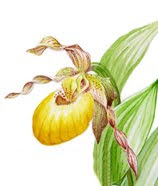
Monday, May 25, 2009
Sunday, May 24, 2009
Orchids and vanilla grass!
This weekend we finished up our Cypripedium candidum monitoring. It's amazing how well they do with a prescribed burn! There were many in this tiny railroad prairie, full of conservative species such as yellow star grass, hoary puccoon, vanilla grass and blue-eyed grass. The spring weather was also more temperate and rainy, so perhaps that has some effect on the orchids. But the burn set back the brush, restored nutrients to the soil, and reduced the number of weed seeds. Next year, who knows?
Speaking of weed seeds, we saw a flock of goldfinches yesterday at Volo Bog, eating the seedheads of the abundant dandelions! I wish I had a flock of goldfinches in my yard, manicuring away at my dandelions! : ) We also saw way, way too much reed canary grass there in the bog. There are at least a dozen endangered and threatened species in a very small area, all vulnerable to takeover by this invasive alien plant! I alerted the state ecologist; hopefully that will help matters?
Monday, May 18, 2009
Showy orchis and ladyslippers!
This past weekend was a two-fer: Saturday we monitored Cypripedium candidum in a high-quality prairie in western Chicagoland, and on Sunday I drove about 150 miles (getting lost twice, unusual for me!) well into farm country to climb a wooded hillside to see Galearis spectabilis on the edge of the slope, in afternoon sun and glorious bloom! This was the first time I had ever seen this particular beauty.
In many states it is declining quickly, and now I can see why: this particular hillside is rapidly being overtaken by garlic mustard, whose antifungal properties spell doom for the ground-dwelling fungus that nourishes our native orchids. We spoke with the landowner about the joys of orchid conservation and the need for keeping garlic mustard and other invasive species at bay, and will hope they will do the management essential for the orchid's survival.
The gentleman said there used to be a large colony on his property years ago, but it had disappeared. This is the first one he has seen in many years, probably due to the abundant rains this spring? The floral associates were Virginia creeper, bedstraw, poison ivy (always!), black and white snakeroots, carrion vine, jack-in-the-pulpit, wild grape, clearweed, sweet cicely, and balsam ragwort. It seemed very happy nestled in its bed of white pine needles. The tree diversity was very high there; the woods seemed not to have been logged, in recent memory, anyway. There were white pine, shagbark hickory, American elm, hackberry and black cherry nearby.
Subscribe to:
Posts (Atom)

